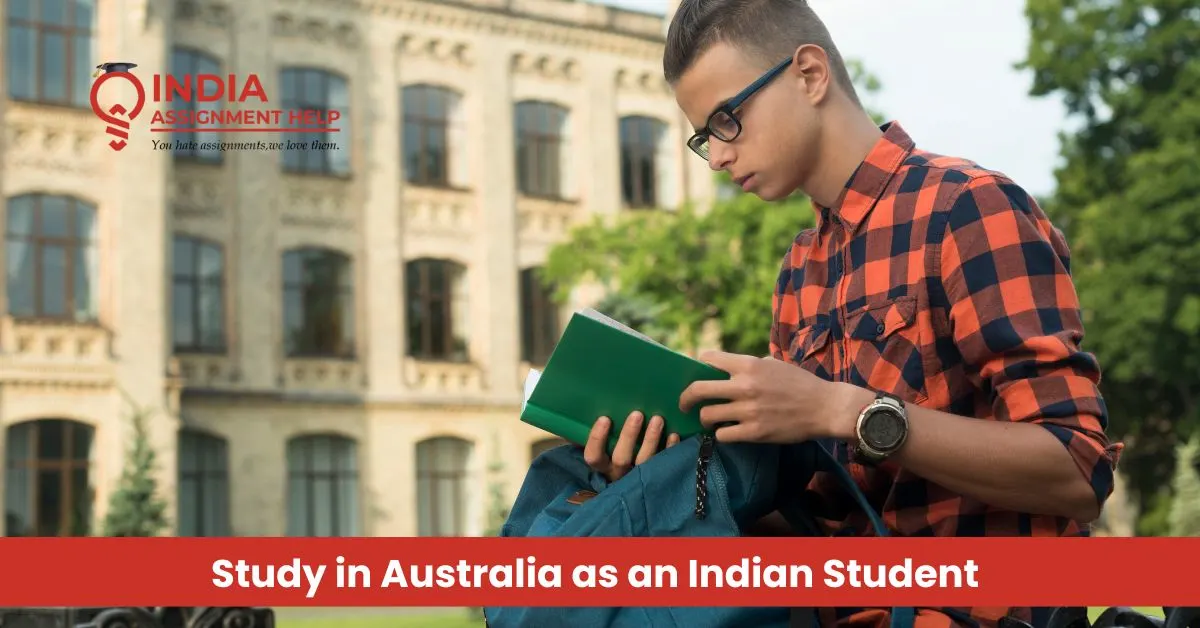How to Study in Australia as an Indian Student: 5 Simple Steps to Get Started from Scratch

Every day, thousands of Indian students scroll through Instagram posts of their friends studying in Sydney or Melbourne, thinking, 'I wish that could be me.' The truth is that it could be them. Yet for many, it feels like something that happens to other people, the lucky ones, the ones who are well-connected or have endless bank accounts.
Australia is one of the top study destinations with some of the world’s best universities. It offers a multicultural environment perfectly suitable for Indian students. No wonder so many students dream of going there. Yet, for those who are starting from zero with no prior knowledge, this process can feel really overwhelming. What’s the first step? Do you apply for a course before a visa, or the other way around? How much money do you need? And what about those small but important details like accommodation, health cover, and part-time work rights?
In this blog, we have simplified your entire journey into five well-explained steps. Even if you know nothing about the Australian education system, by the end of this guide, you will know enough to be confident about starting your study in Australia journey.
Step 1: Explore and Choose Your Course & Institution
Your starting point is deciding what you want to study and where. You can choose from a broad range of courses across multiple disciplines like engineering, IT, business, healthcare, hospitality, design, and more. There’s no right or wrong choice here; it depends on your interests, career goals, and budget.
Universities like the University of Melbourne, the Australian National University, the University of Sydney, and Monash University are high on the global rankings. But remember, rankings aren’t everything. Some mid-tier universities excel in specific fields and have lower tuition fees. And it makes them ideal for many students.
It’s also important to check intake months. Most universities have February and July intakes, and a very few of them have November intakes. Application deadlines are usually 3–4 months before the intake, so planning is the key here to get into your favorite universities.
To make this entire process easier, you can create a spreadsheet and compare tuition, entry requirements, living costs in each city, and scholarship availability. This Excel sheet is going to help you in planning your study in Australia.
Step 2: Apply and Secure Your Offer & CoE
Once you’ve narrowed your list, the next step is to start with applications. You can either do this directly through the university’s online portal or via authorized agents.
What you’ll need in your university application process:
- Academic transcripts and mark sheets
- Proof of English proficiency (IELTS, TOEFL, or PTE Academic)
- Statement of Purpose or Genuine Temporary Entrant (GTE) essay explaining why you chose Australia, that course, and your plans
- A valid passport
- Letters of recommendation (for certain courses)
The universities usually require an undergraduate from India to have a class 12 score of 65% or higher. For postgraduate courses, you’re expected to have a minimum of 60% in your bachelor’s degree, plus relevant English test scores are also needed.
After you’ve applied, now it’s time to wait. Your essay plays a great role in this, so make sure to thoroughly research before writing it. You can even reach out to an essay writing service like ours for assistance.
If your application is accepted, you’ll first receive a Letter of Offer. Once you accept it and pay the required deposit, the university will issue your Confirmation of Enrollment (CoE), which is a document that’s essential for your visa application.
Step 3: Apply for Your Student Visa (Subclass 500)
When you have a CoE in hand, you are eligible to apply for the Subclass 500 Student Visa via the Australian Government’s ImmiAccount portal. This visa allows you to study in Australia full-time and also work part-time during your course.
Key requirements for a visa application include:
- CoE from your chosen university.
- Proof of English proficiency (IELTS 6.0+, PTE 50+, or equivalent).
- Genuine Temporary Entrant statement detailing your academic intentions and reasons for returning to India post-study.
- Financial proof to show you can cover tuition, living expenses (~AUD 24,500/year), and travel costs.
- Overseas Student Health Cover (OSHC): mandatory for the length of your stay.
- Health and character checks: medical exams and, if required, police clearance.
The visa fee is around AUD 2000, and processing times average 7–8 weeks, although they can vary depending on several factors.
The accuracy in your visa application matters a lot. Even small errors or missing documents can lead to delays or even refusals, so make sure you’ve carefully read the requirements and all your documents are error-free.
You’re also required to write a separate Visa SOP that explains why you’ve chosen Australia, how long you plan to stay, and whether or not you have solid reasons to return to your home country. You can reach out to our team for Visa SOP samples, and we’ll be happy to help you with the same.
Step 4: Prepare for Departure and Logistics
Once your visa is granted, it’s time to shift your focus from paperwork to practical planning. Make sure you have sorted out everything we’ve listed below.
- Book flights: You should aim to arrive 1–2 weeks before classes start to attend orientation and settle in.
- Sort accommodation: It’s always better to explore housing options before you arrive. Options range from on-campus housing to private rentals and homestays. Costs vary by city; Sydney and Melbourne are pricier than Adelaide or Perth.
- Set up your OSHC account: you’ll need it for healthcare access in Australia.
- Open a bank account: Many banks allow you to do this online before arrival.
- Apply for a Tax File Number (TFN) if you plan to work part-time.
Don’t forget to pack all your important documents safely, like your passport, visa grant letter, CoE, academic records, OSHC policy, and copies (physical and digital) of each.
If it’s your first time experiencing Australia, we’d advise you to read blogs and watch YouTube videos so that you get to know more about Australian culture. You can check out our blog on what your first month in Australia is going to be like. You’ll also find related blogs on how you can figure out accommodation and transportation in Australia.
Step 5: Start Your Studies and Plan Your Future
Once you arrive, your dream is already half completed. The journey from here totally depends on what decision you take and how you handle things Australia throws at you.
Make sure to attend orientation sessions because they’re not just campus tours; they also make you understand things like student support services, job resources, and safety tips.
During your time in Australia, you can work Part-time for up to 20 hours per week during semesters and unlimited hours during breaks. Many Indian students in Australia choose to work in hospitality, retail, or on-campus roles to help cover living expenses and gain local experience. You can read our detailed blog about part-time jobs to know more.
There are many scholarship opportunities available for indian students. Some can be applied for even after you start your course if your grades are strong.
Conclusion
Studying in Australia as an Indian student can seem complicated and even impossible at first, but when you break it down into clear steps and research every little thing in detail, this process becomes manageable even if you’re a complete beginner.
Every Indian student who’s successfully made the move once stood where you are now, unsure where to start, but if they made it, so can you. We hope this blog made your study in Australia feel possible. Just follow these steps and build a solid plan around them. If you have any other doubts, feel free to reach out to our team at India Assignment Help, and we’ll assist you with your queries.





